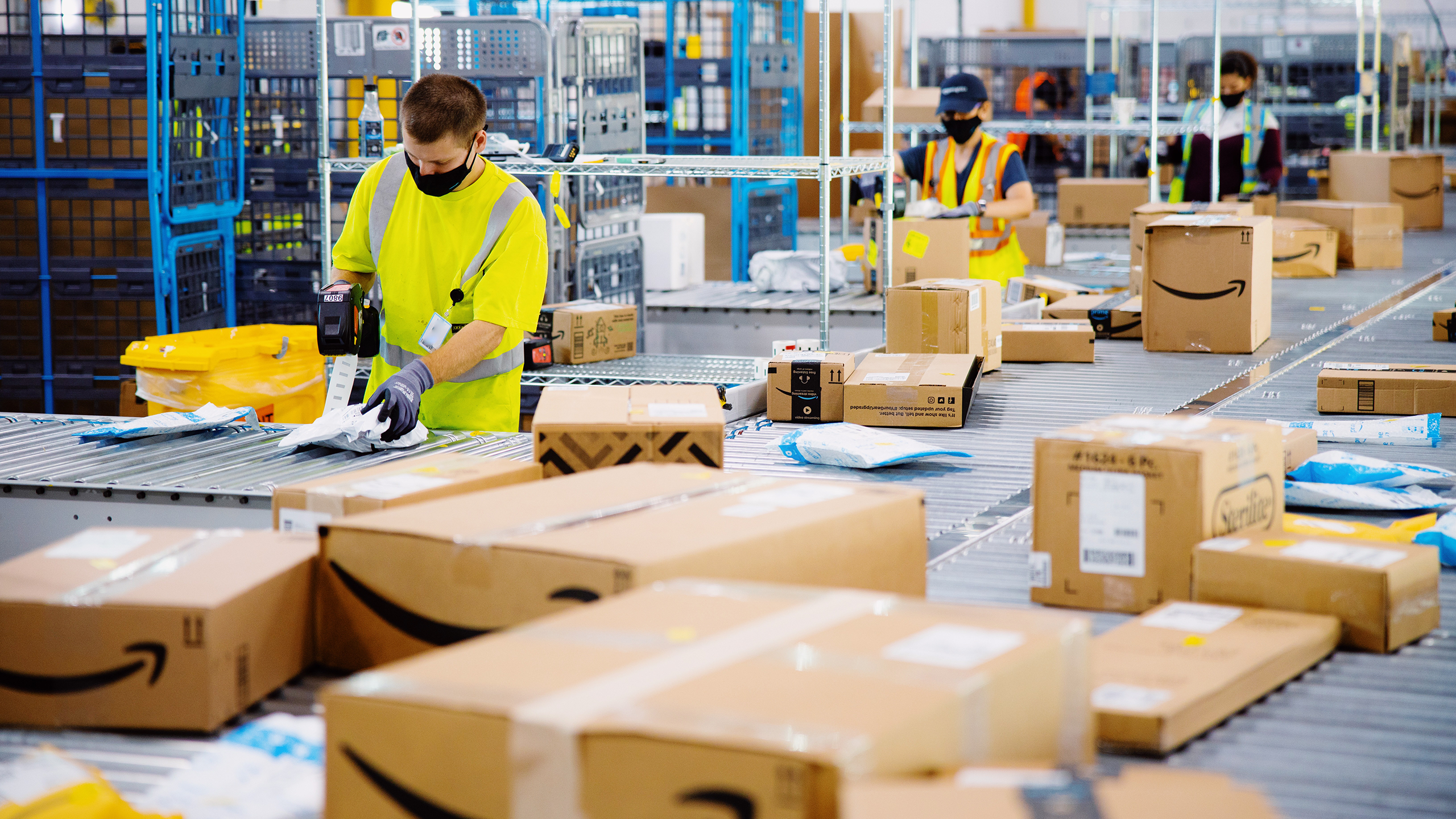Amazon Reignites its Warehouse and Logistics Expansion
The e-commerce king has either leased, bought, or announced the addition of 16 million square feet of warehouse space this year.

Sign up for smart news, insights, and analysis on the biggest financial stories of the day.
Ever wonder what big old Amazon thinks of all the headway other retailers are making online? Now we know.
After roughly two years off, Amazon is aggressively expanding its warehouse and logistics network, The Wall Street Journal reported on Wednesday. Walmart’s e-commerce ambitions and the ascendancy of discount online sellers Shein and Temu may just be to thank.
Same-Day Some-Days
Amazon massively expanded its logistics and warehouse operations during the pandemic, when e-commerce sales as a share of total US purchases rocketed to nearly 17% from around 10%, per Census Bureau data. In a 24-month span, the e-commerce giant doubled the size of its fulfillment network — growth that occurred so quickly that Amazon spent the subsequent two years tapping the brakes on network expansion entirely.
But in that time, Walmart reshaped its e-commerce game, using its 4,700 US locations as de facto e-commerce fulfillment centers. Coupled with China-based Shein and Temu busting into the US market with ultra-cheap goods, Amazon is facing pressures on both price and delivery. Which explains why it’s re-upping its logistics network game:
- Amazon has either leased, bought, or announced the addition of 16 million square feet of warehouse space this year, according to MWPVL International, a Canada-based supply-chain consulting firm. It already owned 413 million square feet of industrial space in North America, per company filings.
- And it’s not just expansion — in the past year, Amazon has rejiggered its logistics network to emphasize regionality over centralization, which it says expands its capacity for rapid delivery. Some of the new spaces added this year are small facilities intended specifically for the final stages of quick delivery, the WSJ reports.
Work It: Expanding its logistics footprint likely means expanding its logistics labor force, too. But that may be easier said than done. In its first-quarter earnings report in 2022, Amazon admitted it may have over-hired in its warehouses to match the rising demand. Meanwhile, a leaked memo obtained by Vox that summer revealed internal company research that contended that Amazon may “deplete the available labor supply in the US network by 2024”; a separate investigation by The New York Times found that the annual employee turnover rate at Amazon’s warehouses had reached an astonishing 150%. No wonder the company is turning toward humanoid robots.











